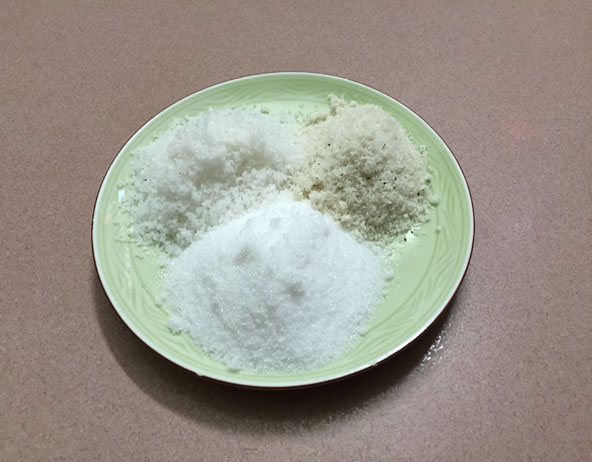Salt is one of the most popular consumer goods in our daily life. We use it for most of everything such as food, drink etc. And there are many types of salt such as Table salt, Celtic sea salt or Himalayan salt etc. I hope to give you an over view of these three types of salt so that you can choose the best one for your health.
Table salt
The most commonly used salt is plain old table salt. This salt is usually highly refined. It is heavily ground and most of the impurities and trace minerals are removed. The problem with heavily ground salt is that it can clump together. For this reason, various substances called anti-caking agents are added so that it flows freely. Food-grade table salt is almost pure sodium chloride, or 97% or higher.
Celtic sea salt
This type of salt is coarse and granular with a higher moisture percentage than many salts- it contains about 13% residual moisture. In addition to its different mineral composition, the harvesting methods for Celtic sea salt differ from those used for Himalayan salt. It is typically gathered by evaporating seawater and collecting the salt in a salt pan.
Celtic sea salt can be used for a variety of different purposes. This salt has a fairly coarse grain but it can be used for both cooking and finishing. It is important to keep in mind, however, that the destiny of Celtic sea salt is much greater than traditional table salt. Therefore you do not need to use as much of it. It also has a lot of residual moisture in it, so it will not suck the moisture out of food.
Mineral composition of Celtic sea salt
Celtic sea salt only contains about 35 trace minerals, though refined one may have additional minerals added. It contains about 84% sodium chloride. This is due to the fact that It contains a higher amount of natural brine (seawater) which lowers the concentration of sodium chloride. Though the number of trace minerals found in Celtic sea salt is lower than for Himalayan Salt, the total concentration of these minerals is higher (between 15 and 23% vs 2 to 4%). However, keep in mind that due to the pollution of oceans, sea salt can also contain trace amounts of heavy metals like lead.
Celtic sea salt vs Himalayan salt
Now that you know the basics about Celtic sea salt you may be wondering what makes Himalayan Salt better. After all, the first one has a higher concentration of trace minerals though the number of minerals present may be a little lower. The main difference between the two is purity- the later is 100% pure whereas the other sea salt typically contains impurities and can easily be contaminated during harvesting. Himalayan salt is completely unrefined and requires no refinement or processing to be edible.
We have the purest salt available on https://himalayansaltusa.com/gourmet-salt
